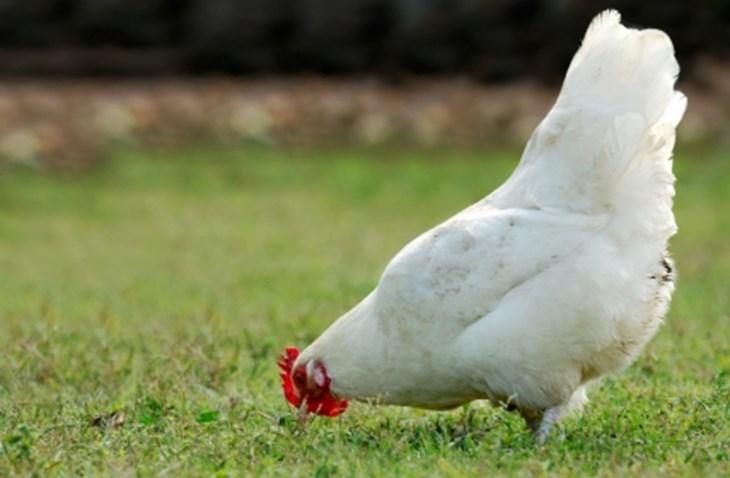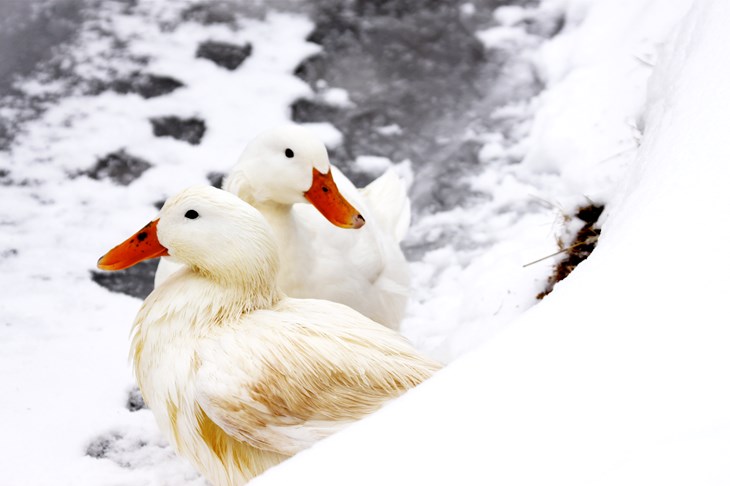Chicken
An astounding 95 percent of all factory-farmed animals raised each year in the United States are chickens raised for meat (known as “broilers”). The numbers don’t lie: by a huge margin, chickens are the species most severely impacted by factory farming—and they suffer more, too.

The modern chicken is bred to grow too big, too fast. These chickens reach slaughter weight in about six weeks—less than half the time it would take slower-growing or “heritage” breeds. So fast, in fact, their bones, hearts, and lungs often can’t keep up causing crippling lameness or heart failure. What’s more, they don’t have access to the outdoors, and tens of thousands of chickens may be crammed into a single shed.
But there are better choices out there, and more and more food companies are committing to better chicken. If you’re buying chicken at the supermarket, be sure to look for meaningful, third-party animal welfare certifications that help ensure a better quality of life for chickens—namely, Global Animal Partnership (GAP) Step 3, Regenerative Organic Certified (ROC), or higher or Animal Welfare Approved (AWA). Check out our “Learn the Labels” page for more details.
If you’re looking for chicken from systems with the highest welfare potential, seek out certified “pasture-raised.” Be sure to ask the company, farm, or restaurant if they’re using higher welfare breeds of chicken, which are typically slower-growing and better suited for life on pasture. While pasture-raised chicken can cost a bit more, animals raised in this system will have access to the outdoors and have full potential to express their natural behaviors.
Better chicken also means better nutrition: factory-farmed, fast-growth chickens are prone to severe muscle disorders that make the meat much higher in fat (up to 224 percent higher!) and lower in protein.
Turkey
As with chickens, turkeys raised in pasture-raised systems have the highest welfare potential. Unfortunately, most turkeys are raised in intensive, indoor systems, which carry many serious animal welfare consequences.

Turkeys are naturally inquisitive animals who love to explore and peck their surroundings, and the factory farm setting simply does not provide the varied, enriched environment they need to thrive. They are also bred to grow much faster (and with more breast meat) than traditional turkeys, and are housed by the thousands in enclosed sheds.
If you buy turkey, search for meaningful, third-party animal welfare certifications—especially Global Animal Partnership (GAP) Step 3 or higher, or Animal Welfare Approved (AWA). Failing that, be sure the turkey you’re buying is labeled USDA Organic “free-range.” As with other animals, “pasture-raised” systems offer the highest welfare potential. Learn the labels here.
Duck
As with chickens and turkeys, “pasture-raised” systems provide the highest welfare potential for ducks. Ducks that aren’t pasture-raised are unlikely to have been given any water (other than drinking water) in which to swim or dip their heads—an essential element of a duck’s well-being.

Currently, the only meaningful third party welfare certification that encompasses ducks is Animal Welfare Approved (AWA)—look for the AWA seal, which guarantees that ducks were given access to forage and given the water and space to dip their heads and clean their feathers.
Download our free Food Guide for more information about buying poultry.
